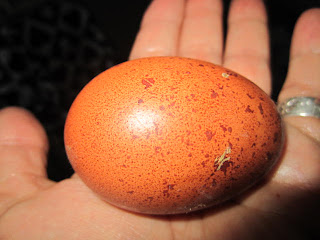 |
| Continental Class Champion Welsummer Hen |
The Fancy Feathers Poultry Show in New Braunfels, Texas was today and it was alot of fun. This was an APA/ABA sanctioned show
which also included a Backyard Show
, Cluck-Off
, Raffle, Silent Auction and Good Food. It also featured a Jr. Show, Youth Showmanship Class, Marans Meet, Araucana Meet, and a Marans Egg Show.APA/ABA/Junior Judge: Steve Jones did a great as Judge. He works well with the 4-H kids. The 4-H kids did a great job of showing their birds and also of helping anyone that needed a hand unloading their birds or with just about anything.There was a great silent auction and raffle with the 2 biggest prizes being an I-Pad and a Kindle. There were tables of raffle items, which included live birds and chicks. I had a booth for The American Livestock Breeds Conservancy which has an interest in rare heritage breed poultry. They do a great job of promoting the rarer breeds and educating the public on heritage livestock of all types. We had a lot of their brochures, books and other literature on the table and it went fast. I had many younger persons and children at our booth with an interest in heritage breeds asking a lot of questions. There are still many upcoming poultry shows for 2011 if you want to show your birds or just go visit and see the birds and meet some very nice poultry lovers/breeders. This is a great hobby for adults and young kids. We need to keep the kids interested because they are the future. Lastly I would like to talk about the Welsummers that I showed today. I showed a rooster that was Reserve Continental Class, 1st and reserve of breed, a hen that was Continental Class champion, Best of Breed and 1st place (there were 6 rows of continentals) and a pullet that was first. My Welsummers originally came from a gentleman in Oklahoma named Mr. Don Gibson. He has spent many years perfecting this breed and has done a great job. He has other continental breeds such as Barnevelders, and Black and Blue Copper Marans.






















